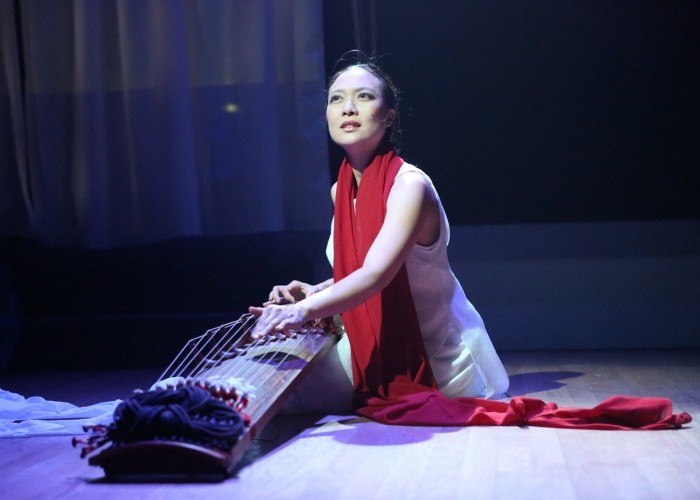Oct 28, 2025 10:47 AM
In Memoriam: Jack DeJohnette, 1942–2025
Jack DeJohnette, a bold and resourceful drummer and NEA Jazz Master who forged a unique vocabulary on the kit over his…

“It’s always been there,” multi-instrumentalist and vocalist Jen Shyu said about a wave of vitriol aimed at Asian Americans during the coronavirus pandemic. “These events, they’re just an excuse for people.”
(Photo: Steven Schreiber/pirecordings.com)For Hatamiya, the challenge is for people to recognize his embrace of traditional and modern jazz as a facet of his own identity.
For Sugimoto and Shyu, their intention has been to examine and embrace their identities as Asian women in their music.
“What I’ve been exploring my whole life as an artist is trying to come up in a music world—and more specifically a jazz world—that has objectified me and ‘exoticized’ me as an Asian female,” Shyu said.
Both Shyu and Sugimoto have felt pressure from various people—men who suggested it would bolster their careers if they played up their sexuality. For Asian women, that expectation can cause profound confusion about who they should or want to be.
“When I was little, the thing I wanted to do most was to be Miss Saigon on Broadway,” Shyu said, laughing. “It’s kind of disturbing: My greatest ambition was to be a prostitute on stage.”
The thread tying these artists together is tethered to a needle that pierces the heart of every Asian who was born in or immigrated to the States: the seemingly unsolvable paradox of belonging here and identifying with American culture, yet being seen as “the other” by neighbors.
Jang recently was out buying groceries, preparing to hunker down and protect against the coronavirus, when a woman yelled at him, accusing the pianist and composer of trying to cut in line. He won’t ever know if her anger was motivated by conscious or unconscious racial bias, but it’s a worry that he shares with the other artists interviewed here—as well as those who nervously endure the current wave of bigotry pointed at Asian Americans.
Four decades after the inception of Asian Improv aRts, Asian Americans continue to find different ways of reconciling their origin stories with their passion for jazz and improvised music, knocking down persistent racial stereotypes in the process.
But Jang realizes everyone needs to find their own path.
“For Francis and myself, that’s our history; for the younger generation, it’s not going to be the same,” he said. “What we share is our personal expression in our own unique way. We march to the beat of a different gong.” DB

Jack DeJohnette boasted a musical resume that was as long as it was fearsome.
Oct 28, 2025 10:47 AM
Jack DeJohnette, a bold and resourceful drummer and NEA Jazz Master who forged a unique vocabulary on the kit over his…

D’Angelo achieved commercial and critical success experimenting with a fusion of jazz, funk, soul, R&B and hip-hop.
Oct 14, 2025 1:47 PM
D’Angelo, a Grammy-winning R&B and neo-soul singer, guitarist and pianist who exerted a profound influence on 21st…

Kandace Springs channeled Shirley Horn’s deliberate phrasing and sublime self-accompaniment during her set at this year’s Pittsburgh International Jazz Festival.
Sep 30, 2025 12:28 PM
Janis Burley, the Pittsburgh International Jazz Festival’s founder and artistic director, did not, as might be…

Jim McNeely’s singular body of work had a profound and lasting influence on many of today’s top jazz composers in the U.S. and in Europe.
Oct 7, 2025 3:40 PM
Pianist Jim McNeely, one of the most distinguished large ensemble jazz composers of his generation, died Sept. 26 at…

Drummond was cherished by generations of mainstream jazz listeners and bandleaders for his authoritative tonal presence, a defining quality of his style most apparent when he played his instrument unamplified.
Nov 4, 2025 11:39 AM
Ray Drummond, a first-call bassist who appeared on hundreds of albums as a sideman for some of the top names in jazz…